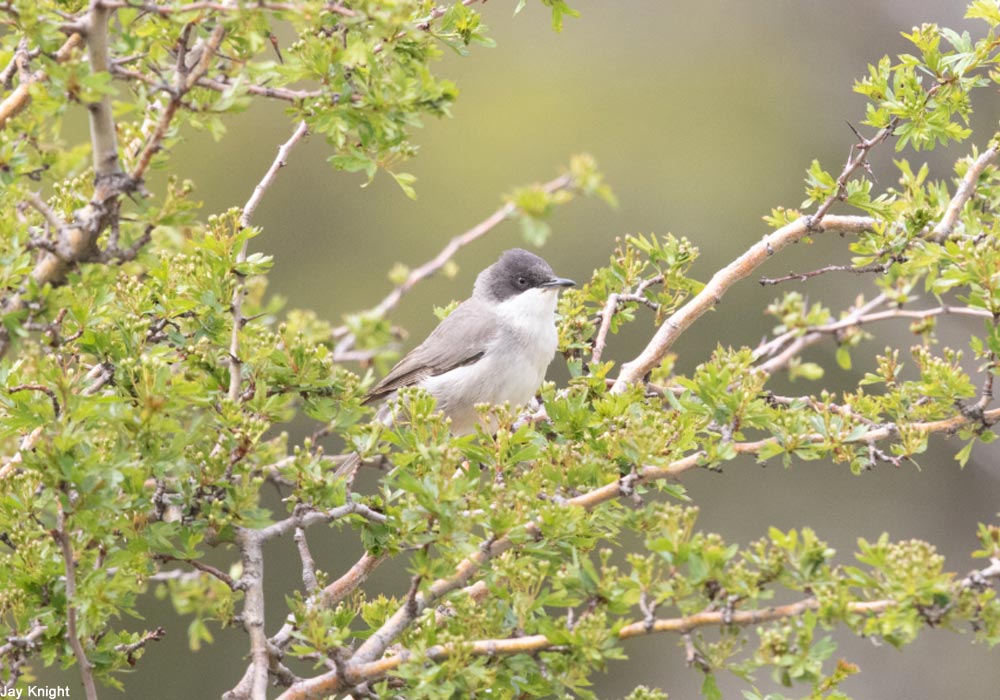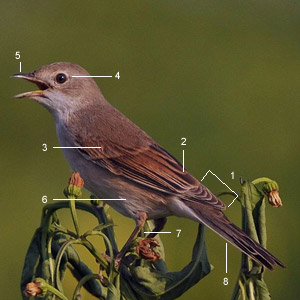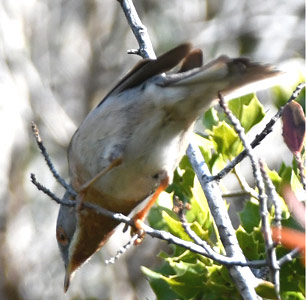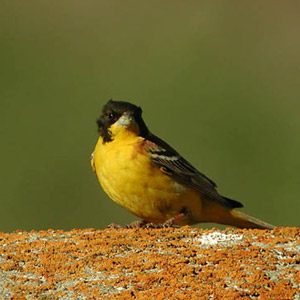Pratique | Identification
Comment distinguer les Fauvettes orphée et orphéane ?

Fauvette orphéane (Curruca crassirostris) près de Çimiköy (Turquie) en avril 2019.
Photographie : Jay Knight / Trekecoadventures.co.uk
Introduction
Les Fauvettes orphée (Curruca hortensis) et orphéane (C. crassirostris) sont deux grandes espèces du genre Curruca (autrefois Sylvia). La seconde était autrefois considérée comme une sous-espèce de la première, jusqu’à ce qu’Hadoram Shirihai et al. (2001) proposent de l’élever au rang de taxon distinct. Elles nichent dans le maquis, les oliveraies et les forêts claires de la péninsule ibérique et du Maroc jusqu’à l’Italie, la Suisse et la Tunisie en passant par le sud de la France pour la Fauvette orphée, et de la Slovénie au Pakistan pour la Fauvette orphéane.
La Croatie se situe à l’extrémité occidentale de l’aire de répartition de la Fauvette orphéane, et pour la plupart des ornithologues, seule cette dernière s’y reproduit; toutefois, dans un article publié en décembre 2019 dans le journal Larus, Milos Martinovic a indiqué avoir observé un chanteur de Fauvette orphée sur l’île de Brač en juin 2015. Après avoir analysé des observations publiées dans plusieurs bases de données, des enregistrements diffusés en ligne et des spécimens naturalisés dans les collections de trois musées, cet auteur suggère que les deux espèces pourraient en fait être présentes sur les îles dalmates, et il incite les observateurs à prêter une attention particulière à leur identification le long des côtes croates.
Suite à ses recherches, il a également constaté que la distinction de ces deux espèces était délicate, les critères les plus fiables étant vocaux et génétiques, suivis par la répartition du blanc sur les rectrices externes (queue).
Dans notre article, nous énumérons les éléments pouvant être utilisés sur le terrain pour différencier les Fauvettes orphée et orphéane. Nous remercions les photographes nous ayant aidés à l’illustrer.
Abstract
The Western Orphean Warbler (Curruca hortensis) and the Eastern Orphean Warbler (C. crassirostris) are two large species of the genus Curruca (formely Sylvia genus). The second was once considered a subspecies of the first one, until Hadoram Shirihai et al (2001) proposed raising it to the rank of a separate taxon. They breed in the maquis, olive groves and open forests, from the Iberian Peninsula and Morocco to Italy, Swizerland and Tunisia via Southern France for the Western Orphean Warbler, and from Slovenia and western Croatia to Pakistan via the Balkans, the Middle East and the Caucasus for the Eastern Orphean Warbler.
Croatia is located to the west of the range of the Eastern Orphean Warbler, and for most of the ornithologists, the Western Orphean Warbler doesn’t breed in this country: however, in an article published in December 2019 in the Larus Journal, Milos Martinovic indicated that he watched a singing Western Orphean Warbler on the island of Brač in June 2015. After having analyzed data published on several websites, recordings uploaded on line, and naturalized specimens held in the collections of three museums, this author suggests that the two species may be present on the Dalmatian islands, and he encourages birders to pay particular attention to their identification along the Croatian coasts. Following his researches, he found that the distinction of these two species was really delicate, the most reliable criteria being vocal and genetic, followed by the repartition of white on the outermost tail feathers.
In our article, we list the elements that can be used in the field to differentiate the Western and Eastern Orphean Warblers, and we thank the photographers who helped us illustrate it.
Poursuivez la lecture de cet article, en vous abonnant dès maintenant !
Découvrez les Archives d’Ornithomedia.com
Pour seulement 10,00 €TTC/an (ou 6,00 € les 6 mois)
Profitez de plusieurs centaines d’articles en accès illimité et sans aucun engagement.
Compléments
Dans la galerie d’Ornithomedia.com
Fauvette orphée (Sylvia hortensis)
Ouvrages recommandés
- Le Guide Ornitho de L. Svensson et al
- Sylvia Warblers: Identification, Taxonomy and Phylogeny of the Genus Sylvia de Hadoram Shirihai, Gabriel Gargallo, Andreas Helbig et Alan Harris (31 mai 2001)
Sources
- Milos Martinovic (2019). Two species of Orphean Warblers Sylvia hortensis, S. crassirostris in Croatia: data overview and implications for future research. Larus. Volume : 54. www.researchgate.net
- Hadoram Shirihai, Gabriel Gargallo, Andreas Helbig et Alan Harris (2001). Sylvia Warblers: Identification, Taxonomy and Phylogeny of the Genus Sylvia. Western Orphean Warbler Sylvia hortensis et Eastern Orphean Warbler Sylvia crassirostris. Pages : 154 – 188. Books.google.fr
- Javier Blasco-Zumeta & Gerd-Michael Heinze. 369 Curruca mirlona. Laboratorio Virtual Ibercaja. blascozumeta.com







Aucun commentaire sur ce sujet
Participer à la discussion !